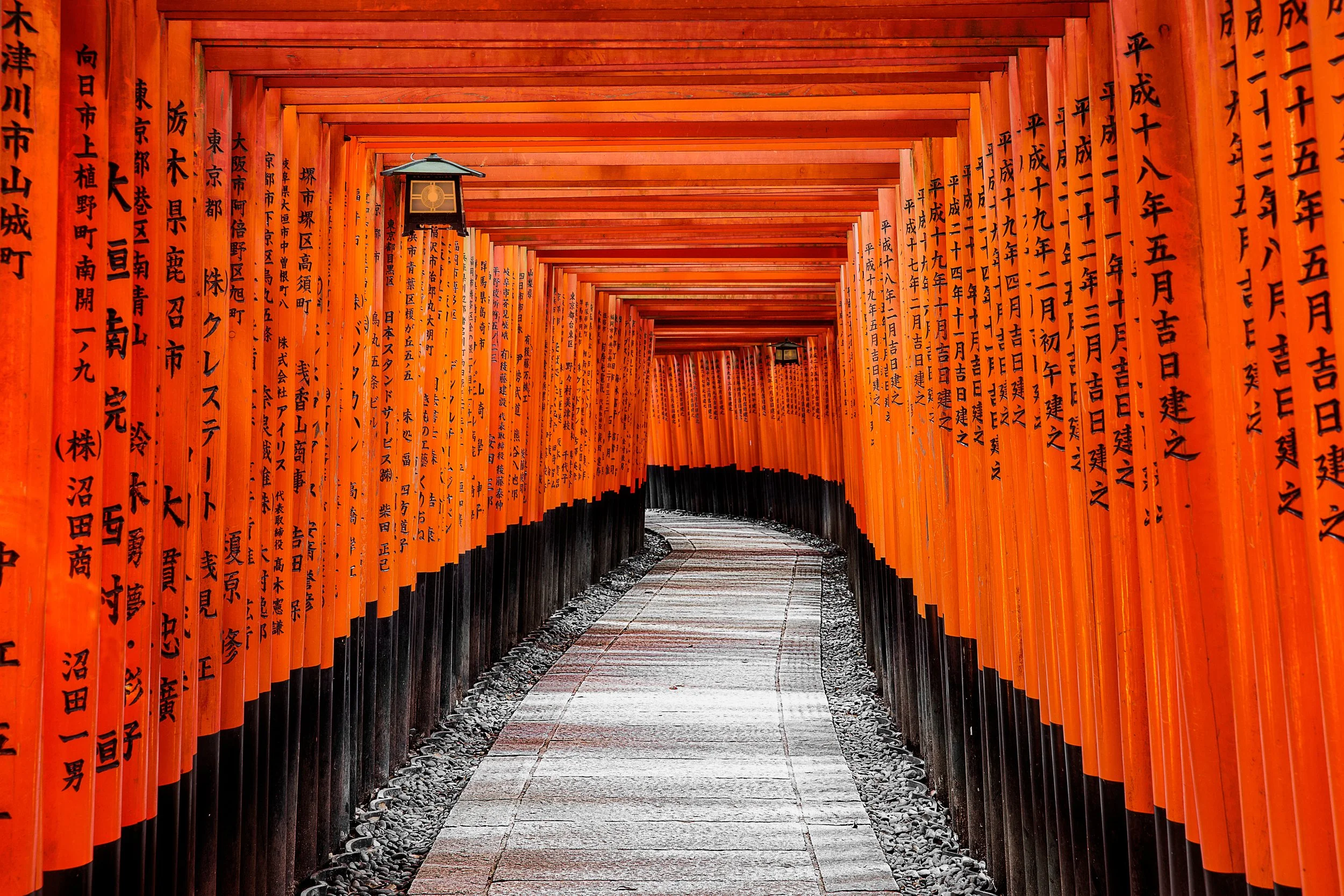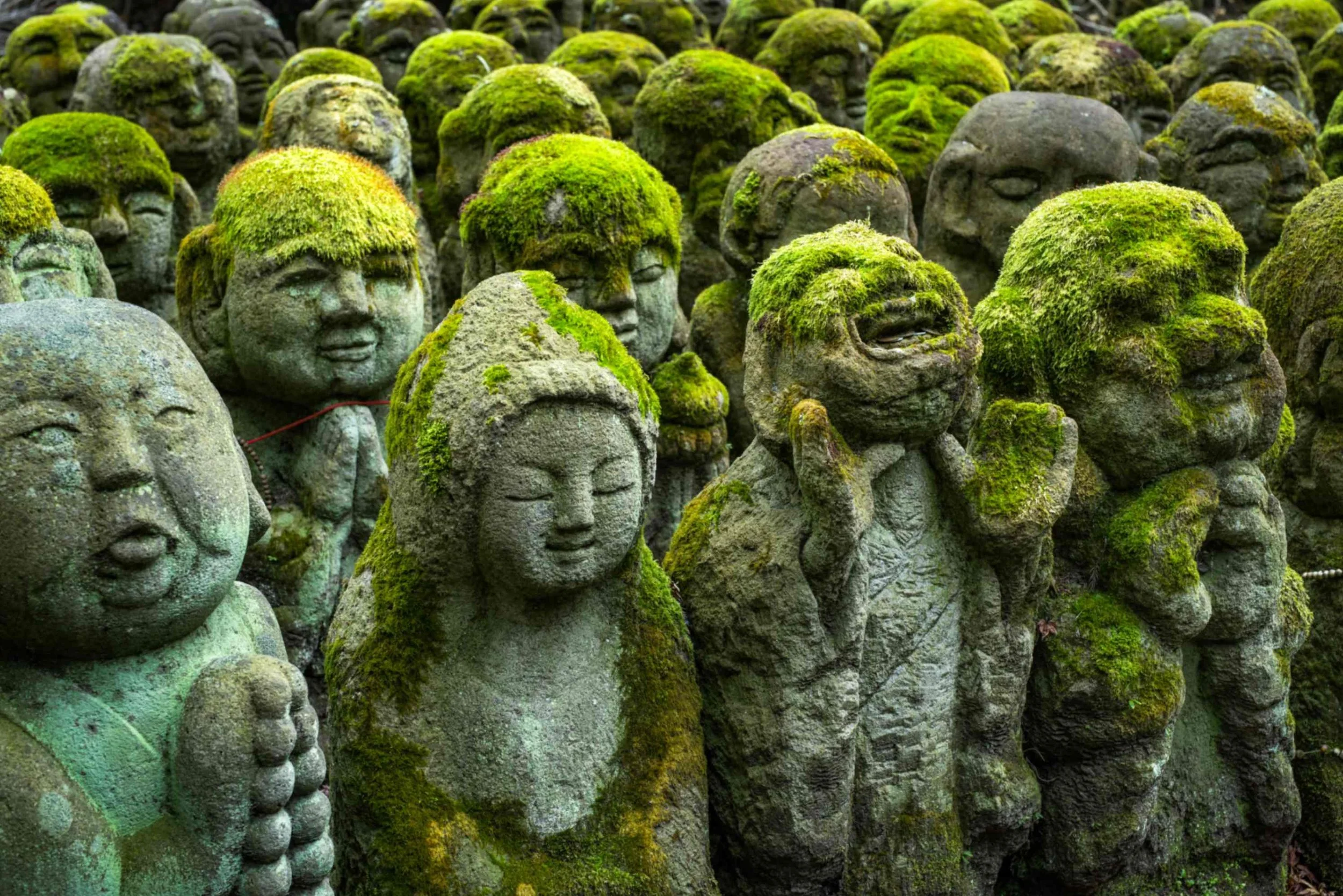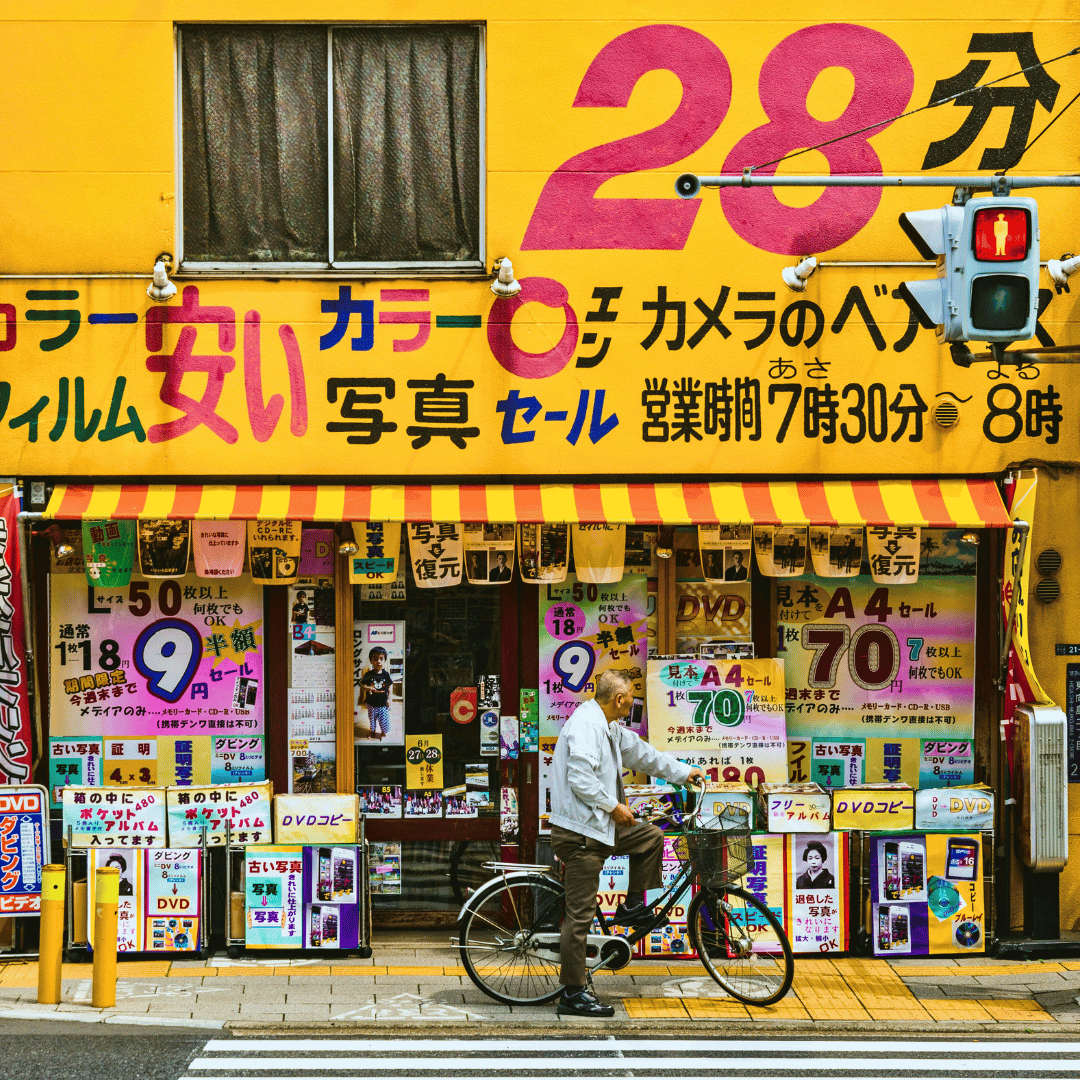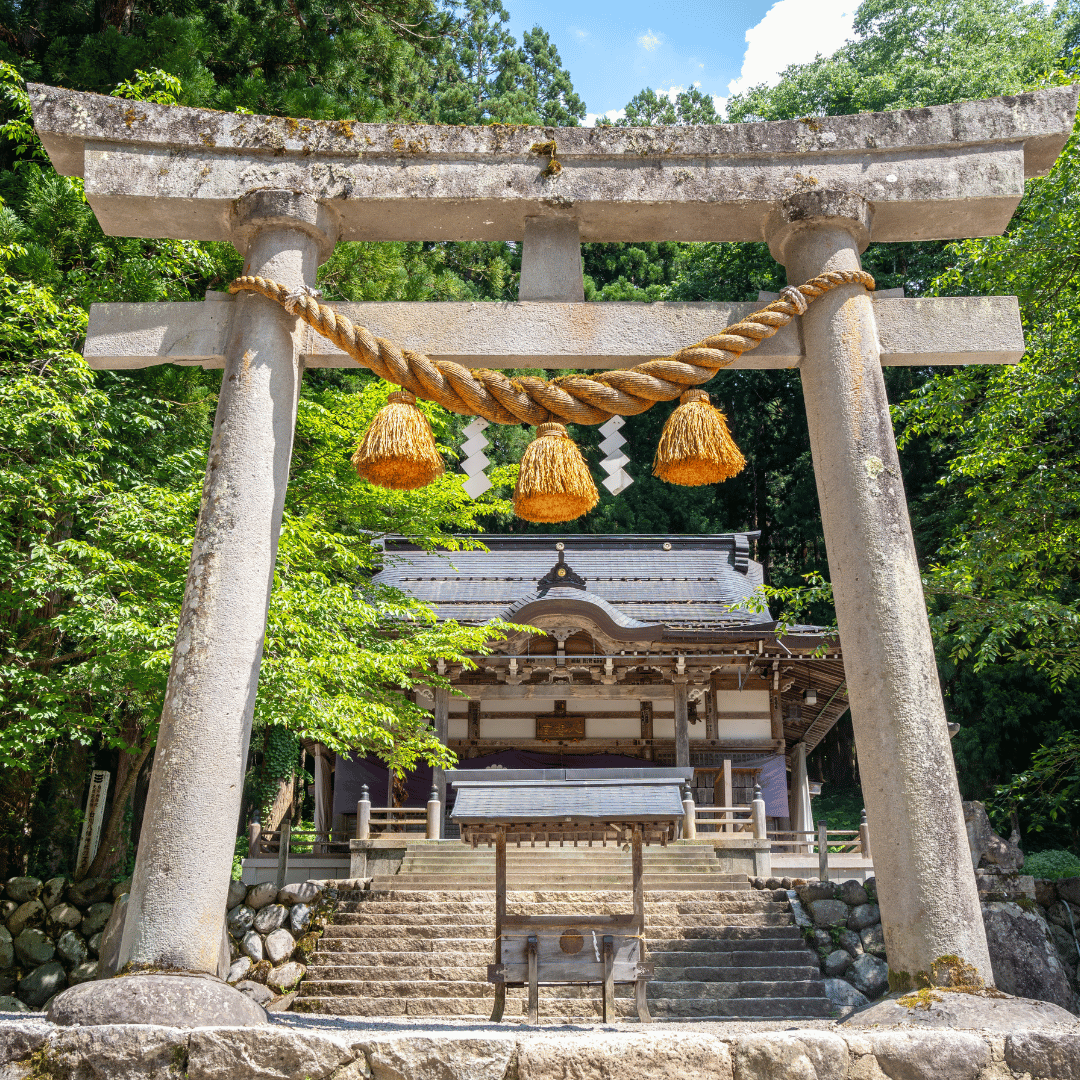
Japan Private Tour Packages
Bespoke Itineraries Designed For Australian Travellers
Japan is a country of enduring traditions, dynamic cities and natural beauty that shifts with the seasons. In Tokyo, modern architecture, hidden shrines and lively neighbourhoods reveal a seamless blend of innovation and heritage, while Kyoto’s temples, gardens and geisha districts reflect centuries of artistry and culture. To the north, regions like Tohoku and Hokkaido offer forested mountains, hot springs and untouched rural landscapes, where village life continues much as it has for generations. In the south, explore the castles and canal towns of Kyushu or unwind on Okinawa’s subtropical islands surrounded by turquoise seas.
Japan private tours can be tailored to your pace and interests, combining iconic highlights with time for genuine local encounters. You might wander through tea fields in Shizuoka, join a sushi masterclass in Tokyo, hike between mountain temples in Nara or soak in an onsen overlooking Mount Fuji. Whether travelling as a couple, family or small group, every journey is designed with expert guides, private transfers and carefully chosen stays that reflect the spirit of each region. From neon skylines to quiet forests and timeless traditions, Japan private tour packages offer a deeply personal and rewarding way to experience this remarkable country. At Asia Unbound, we design private journeys across Asia for Australian travellers seeking flexible, well planned experiences and genuine cultural connection.
Our Best Japan Tour Itineraries
Japan Travel Advice For First Time Visitors
-
When preparing for a trip to Japan, there are several useful things to know that will make your journey smoother and more rewarding. Japan is one of the world’s most efficient, safe and fascinating countries to explore, but understanding a few cultural and practical details in advance helps travellers experience it more comfortably.
Entry and visas are the first step. Travellers from Australia, the UK, the United States and many European countries can enter Japan visa-free for stays of up to 90 days. Those from other nationalities may need to apply for a tourist visa before arrival. Immigration procedures are efficient but thorough, so ensure your passport is valid for at least six months beyond your travel dates. Electronic customs and immigration kiosks are now common at major airports, speeding up the arrival process.
Transport within Japan is world-class and a highlight of any visit. The shinkansen (bullet train) connects all major regions, offering fast and comfortable travel between cities such as Tokyo, Kyoto, Osaka and Hiroshima. For shorter distances, local trains and subways are clean, punctual and easy to navigate, even for first-time visitors. Prepaid transport cards like Suica or Icoca can be used on most networks and also for small purchases in convenience stores. Private transfers and car services can be arranged for greater flexibility, especially in rural areas where public transport is limited.
Money and payments are increasingly cashless, though Japan still retains some traditional habits. Credit cards and digital wallets are accepted in cities and larger establishments, while small restaurants, temples and rural inns often prefer cash. ATMs that accept foreign cards are widely available in post offices and convenience stores. The local currency is the yen, and it’s worth carrying small denominations for purchases such as train tickets, snacks and temple donations.
Cultural etiquette is deeply valued in Japan and understanding it enhances every encounter. Politeness and respect are shown through actions more than words. Removing shoes before entering homes, temples and some traditional restaurants is expected. Bowing is a common form of greeting, and handing over money or cards with both hands is considered courteous. Speaking softly in public spaces, avoiding eating while walking, and disposing of rubbish properly are small gestures that reflect local norms and are appreciated by residents.
Health and safety standards are excellent. Tap water is safe to drink, streets are clean, and public hygiene is taken seriously. Pharmacies are well stocked, though many medicines are labelled in Japanese, so bringing essential supplies is recommended. Travel insurance is important, as healthcare can be expensive for visitors. Japan is also known for its low crime rate, making it one of the safest countries to travel through independently or with a private guide.
Connectivity and communication are straightforward. Free Wi-Fi is available at airports, train stations and many hotels, while portable Wi-Fi devices and local SIM cards can be easily rented on arrival. English signage is common in major cities, but having Google Translate or a language app is helpful in smaller towns. Basic phrases such as “arigato” (thank you) or “sumimasen” (excuse me) are always appreciated.
Timing your trip carefully can make a big difference. Millions of people visit Japan every year for its colours: spring (March to May) brings cherry blossoms, while autumn (October to November) is known for colourful foliage. Summer is lively with festivals, though hot and humid, while winter offers snow, onsen bathing and skiing in the north. Japan’s public holidays such as Golden Week in late April and early May can see crowded trains and fully booked hotels, so planning early is advised.
-
ChatGPT said:
Japan is not divided into states, but into 47 prefectures, each with its own local government and character. These prefectures are grouped into eight major regions, which reflect the country’s geography, history and culture rather than formal administrative divisions.
At the northern tip of Japan lies Hokkaido, the country’s second-largest island and its own region. Known for its wild landscapes, national parks and winter sports, Hokkaido is home to Sapporo and some of Japan’s best skiing and seafood.
Moving south, the Tohoku Region covers the northern part of Honshu, Japan’s main island. It includes the prefectures of Aomori, Iwate, Miyagi, Akita, Yamagata and Fukushima. This region is known for its rugged mountains, hot springs, traditional festivals and remote villages that retain a strong sense of heritage and connection to nature.
The Kanto Region surrounds Tokyo, Japan’s bustling capital. Along with Tokyo, it includes Kanagawa, Chiba, Saitama, Ibaraki, Tochigi and Gunma. Kanto is the country’s economic and political centre, home to Japan’s largest urban area but also to coastal towns, hiking trails and historical sites that offer contrast to city life.
In central Honshu, the Chubu Region stretches between Tokyo and Kyoto. It includes Niigata, Toyama, Ishikawa, Fukui, Yamanashi, Nagano, Gifu, Shizuoka and Aichi. This area is known for the Japanese Alps, traditional crafts, and diverse landscapes ranging from the snow-covered peaks around Nagano to the tea fields and coastlines of Shizuoka.
The Kansai Region, also called Kinki, is often seen as Japan’s cultural heart. Its prefectures include Osaka, Kyoto, Hyogo, Nara, Shiga, Wakayama and Mie. Kansai blends ancient and modern Japan, with Kyoto’s temples and Nara’s shrines alongside Osaka’s lively markets and street food.
To the west, the Chugoku Region occupies the southwestern corner of Honshu. It includes Hiroshima, Okayama, Yamaguchi, Tottori and Shimane. The region is known for its historical landmarks such as Hiroshima’s Peace Memorial Park, as well as coastal beauty and the sacred island of Miyajima.
Across the inland sea lies Shikoku, the smallest of Japan’s main islands, made up of four prefectures: Kagawa, Tokushima, Ehime and Kochi. It’s famous for the 88 Temple Pilgrimage route, scenic coastlines and laid-back atmosphere.
Finally, the Kyushu and Okinawa Region encompasses Japan’s southern islands. Kyushu includes Fukuoka, Saga, Nagasaki, Kumamoto, Oita, Miyazaki and Kagoshima, while Okinawa lies further south in the East China Sea. This part of Japan has a warmer climate, volcanic landscapes, and a distinct cultural identity influenced by its Ryukyu heritage.
Together, these eight regions and 47 prefectures form the fabric of Japan, each offering its own traditions, cuisine and landscapes that reflect the diversity of the nation.
-
The main language spoken in Japan is Japanese, known locally as Nihongo. It is used in every aspect of daily life - from government and education to business and entertainment - and is the unifying language across all regions of the country. Japanese uses three writing systems: hiragana and katakana, which are phonetic scripts, and kanji, which consists of Chinese characters adapted into Japanese. Most written materials combine all three forms.
While Japanese is the national language, there are also regional dialects known as hōgen. These can vary quite significantly in pronunciation, vocabulary and tone from one area to another. For example, the Kansai dialect spoken around Osaka and Kyoto is known for its lively rhythm and distinctive expressions, while the Tohoku dialect in northern Japan sounds softer and more drawn out. Although standard Japanese (based on the Tokyo dialect) is understood everywhere, hearing these local variations adds depth to travel experiences across the country.
English is widely taught in schools and is often used on public signage, transport systems and hotel information. In major cities like Tokyo, Kyoto and Osaka, you can usually get by using English in hotels, restaurants and tourist attractions. However, outside urban areas, English fluency tends to be limited, so learning a few key phrases is useful and appreciated.
Here are some helpful phrases for travellers:
Hello - Konnichiwa (こんにちは)
Thank you - Arigatou gozaimasu (ありがとうございます)
Excuse me / Sorry - Sumimasen (すみません)
Yes - Hai (はい)
No - Iie (いいえ)
Please - Onegaishimasu (お願いします)
Goodbye - Sayonara (さようなら)
Using simple Japanese greetings and polite words often leads to warm responses and makes interactions more enjoyable. Even small efforts to speak the language are seen as a sign of respect and curiosity, both of which are highly valued in Japanese culture.
-
Japan is a destination that can be enjoyed in every season, but the experience changes dramatically throughout the year. Weather, crowds and prices all vary, so timing your trip carefully can make a big difference.
Spring (March to May) is one of the most beautiful yet busiest times to visit Japan. The arrival of cherry blossoms draws visitors from around the world, and parks in cities such as Tokyo, Kyoto and Osaka fill with locals enjoying hanami (flower-viewing) picnics. The mild temperatures and clear skies make it ideal for sightseeing, but this popularity also means hotels and trains book out early, and prices rise significantly. For fewer crowds, consider travelling in late March before peak bloom or in early May after Golden Week, when domestic travel surges.
Summer (June to August) is a season of festivals and contrasts. Early summer begins with the rainy season across much of Japan, bringing short bursts of rain and lower tourist numbers. By late July and August, the weather turns hot and humid, and cities host lively fireworks displays and street celebrations. While summer offers great cultural experiences, it can feel crowded in major destinations. Prices are generally moderate outside local holiday periods, but late August and early September often provide a more comfortable balance between activity and affordability.
Autumn (September to November) is considered one of the best times to visit Japan, with crisp air, clear days and brilliant autumn foliage. Kyoto, Nikko and the Japanese Alps are especially popular as the leaves change colour, and demand for accommodation rises sharply in October and November. Travelling in early autumn, before the full colour season, allows you to enjoy pleasant weather and smaller crowds while still capturing the essence of the season.
Winter (December to February) sees Japan transform into a landscape of snow, festivals and steaming hot springs. Hokkaido, Nagano and Niigata are world-famous for skiing, attracting both domestic and international visitors. This can push up prices in mountain resorts, though cities like Tokyo and Kyoto are quieter and more affordable during this time. Winter also brings some of Japan’s best food, from hotpots to fresh seafood, and is perfect for travellers seeking a calmer pace.
In summary, spring and autumn are the most scenic times to visit Japan but also the most crowded and expensive. Travelling in the shoulder seasons - late February to early March or late May to June, as well as early September - offers excellent weather, better value and more space to enjoy temples, gardens and cultural sites without the rush.
-
Dressing for Japan is about being comfortable, respectful and prepared for the seasons. The Japanese are known for their neat, understated style, and while no one expects travellers to be fashion experts, a little effort to dress tidily and appropriately goes a long way.
Japan has four distinct seasons, so what you pack depends on when and where you are travelling. In Spring, the weather is mild but can shift between warm and cool. Layers are key. A shirt, a light jumper and a jacket will cover most situations. Evenings can still be chilly during cherry blossom season, so having something warm to throw on helps.
Summer is hot and humid, especially in places like Tokyo and Kyoto. Light, breathable fabrics such as cotton or linen are the most comfortable. Locals tend to dress modestly, so it is best to avoid revealing clothing. When visiting temples or shrines, shoulders and knees should be covered. It is common to remove shoes indoors, so slip-on shoes and clean socks make things easier.
During Autumn, the temperatures drop, and the air turns crisp. It is one of the most comfortable seasons to visit, and you can wear jeans, long-sleeve shirts and a light jacket during the day. Evenings can be cooler, particularly in the mountains, so a warm jumper or windbreaker is useful. Locals often wear muted tones that reflect the season, but this is more a matter of taste than expectation.
Winter brings cold weather across much of the country. In Tokyo and Osaka, a warm coat and scarf are usually enough, while in northern areas such as Hokkaido or Nagano you will need heavier winter gear, including gloves and boots. If you plan to visit an onsen, remember that bathing is done without clothing. It may feel unusual at first, but it is a normal and respected custom in Japan.
In general, aim to dress neatly, layer appropriately for the weather and avoid overly casual or revealing clothes. Japan values presentation, and showing respect through appearance makes travel smoother and more enjoyable. Practical, tidy and comfortable clothing will help you fit in and feel prepared wherever your journey takes you.
-
Eating in Japan is one of the great pleasures of travel. The food is varied, seasonal and deeply connected to local culture. While dishes like sushi and ramen are known around the world, Japanese cuisine includes a huge range of regional specialities and everyday meals that reflect the country’s landscapes and traditions.
Start with Japan’s most recognisable dishes. Sushi and sashimi highlight fresh seafood and simple presentation, available everywhere from small local shops to fine dining restaurants. Ramen is another essential, with flavours that change from region to region. Fukuoka is known for rich pork-based tonkotsu ramen, Hokkaido for miso, and Tokyo for light soy-based broths. Tempura, lightly battered and fried seafood or vegetables, is another national favourite, often served with dipping sauce, rice and soup.
Each region of Japan has its own local cuisine worth exploring. In Osaka, try okonomiyaki, a savoury pancake filled with vegetables and meat, and takoyaki, octopus balls topped with sauce and bonito flakes. Kyoto is known for elegant kaiseki dining, a traditional multi-course meal that celebrates seasonal ingredients. Hokkaido offers excellent seafood and dairy, while Hiroshima serves a layered version of okonomiyaki. Visiting food markets such as Nishiki in Kyoto or Omicho in Kanazawa is a great way to taste these local dishes.
Street food and casual dining are an important part of Japanese life. Yatai stalls and izakaya pubs serve affordable dishes such as grilled yakitori skewers, dumplings and bowls of noodles or rice. Bento lunch boxes from train stations, known as ekiben, are another highlight, with each area featuring its own version. Even convenience stores such as 7-Eleven and Lawson offer fresh snacks, sandwiches and rice balls that are surprisingly good.
Japan also has a rich tradition of sweets and desserts. Try mochi, a soft rice cake filled with sweet bean paste, or dorayaki, two pancakes with red bean or custard in the middle. Matcha desserts, seasonal pastries and sakura-flavoured snacks in spring are also popular.
Eating in Japan is about appreciation and respect as much as taste. Meals are beautifully presented, and it is polite to say itadakimasu before eating and gochisousama deshita when finished. With such variety, freshness and care in preparation, Japanese food is one of the most memorable parts of any journey.
-
How long you should spend in Japan depends on what you want to see and how quickly you like to travel. The country is larger and more varied than many first-time visitors expect, with experiences that range from neon-lit cities and ancient temples to mountain villages and island coastlines. A few extra days can make a big difference, allowing time to slow down and enjoy local life rather than rushing from place to place.
If you have around one week, focus on one or two regions rather than trying to cover the whole country. A classic route is Tokyo, Kyoto and Osaka, connected by the bullet train. This gives a balance of modern city life, traditional culture and great food. Alternatively, you could explore a single area in more depth, such as Hokkaido’s landscapes, the Kansai region’s temples and markets, or Kyushu’s volcanic scenery and hot springs.
With 10 to 14 days, you can see a wider cross-section of Japan without feeling rushed. This is enough time to include Tokyo, Kyoto and Osaka along with smaller places like Hakone, Kanazawa or Takayama. You might spend a few days in the mountains or countryside, visit a coastal town, or relax in an onsen resort. Two weeks allows time for a mix of cultural discovery, nature, food and travel by train at an enjoyable pace.
Travellers with three weeks or more can explore Japan in depth, visiting less-visited regions such as Tohoku in the north, Shikoku in the south or Okinawa’s islands. This length of trip lets you experience both the famous highlights and the quieter corners where daily life unfolds at a slower rhythm.
In short, one week gives a taste, two weeks feels balanced, and three weeks allows a deeper journey through the country’s varied landscapes and traditions. Japan is easy to navigate, so you can tailor your itinerary to your interests, but allowing time to rest, wander and absorb the culture will make the experience far more rewarding.
-
Absolutely! It’s very easy to combine a private tour of Japan with travel to another nearby country. Japan’s excellent flight connections and efficient airports make multi-country itineraries smooth and straightforward, especially across North and East Asia.
One of the most natural pairings is South Korea, which is less than two hours by air from many Japanese cities. You can fly directly between Tokyo and Seoul, Osaka and Busan, or even take a ferry across the Korea Strait. Combining the two countries offers an incredible contrast - Japan’s refinement and precision alongside Korea’s bold energy, food culture and contemporary art scene. Travellers often spend a week or more in each, linking Tokyo and Kyoto with Seoul and Gyeongju for a journey that blends history and innovation.
Another excellent option is Taiwan, which sits just a short flight south of Japan. The two share deep cultural ties, yet each has its own rhythm and charm. From Taipei’s night markets and tea culture to Japan’s temples and gardens, the combination creates a journey rich in flavour and tradition. Daily flights connect Tokyo, Osaka and Fukuoka with Taipei, Kaohsiung and Taichung, making logistics simple.
At Asia Unbound, we specialise in designing seamless multi-country private tours across Asia, including Japan, South Korea and Taiwan. Our team handles all ground arrangements, local guides and flight connections so that your journey feels effortless from start to finish. Whether you want to explore the contrasts of East Asia or dive deeper into one region, we can tailor a private itinerary to match your pace, interests and style of travel.
Popular Places To Visit In Japan
Plan Your Japan Itinerary With Asia Unbound
Established in 2007, Unbound Travel Group is a collection of tourism brands specialising in highly curated private touring and small group journeys throughout Asia. With more than two decades of experience, we create bespoke itineraries for discerning travellers looking for a real adventure. Based in Australia, our team uses our on-the-ground experience and first-hand knowledge to carefully curate experiences that are innovative and authentic.
When you start to research a trip to Asia, it’s easy to feel overwhelmed by the seemingly endless possibilities, especially if you don’t want to join a group tour. At Asia Unbound, we’ve made this process easy. We simply need you to tell us relevant information about yourself and the type of travel experience you are looking for - whether it’s a wish list of places you want to visit, a style of travel, a particular interest or theme that you want to explore, or all of these factors. Using this information, we curate a custom-made Asia private tour just for you. It’s that simple.
Japan Hotel Recommendations



















